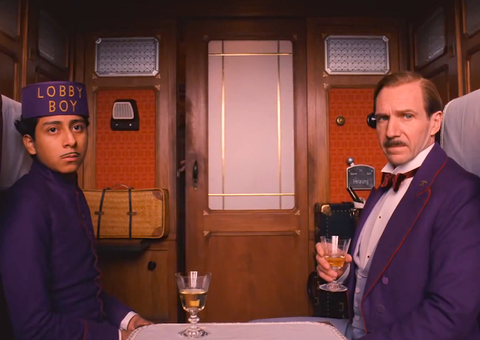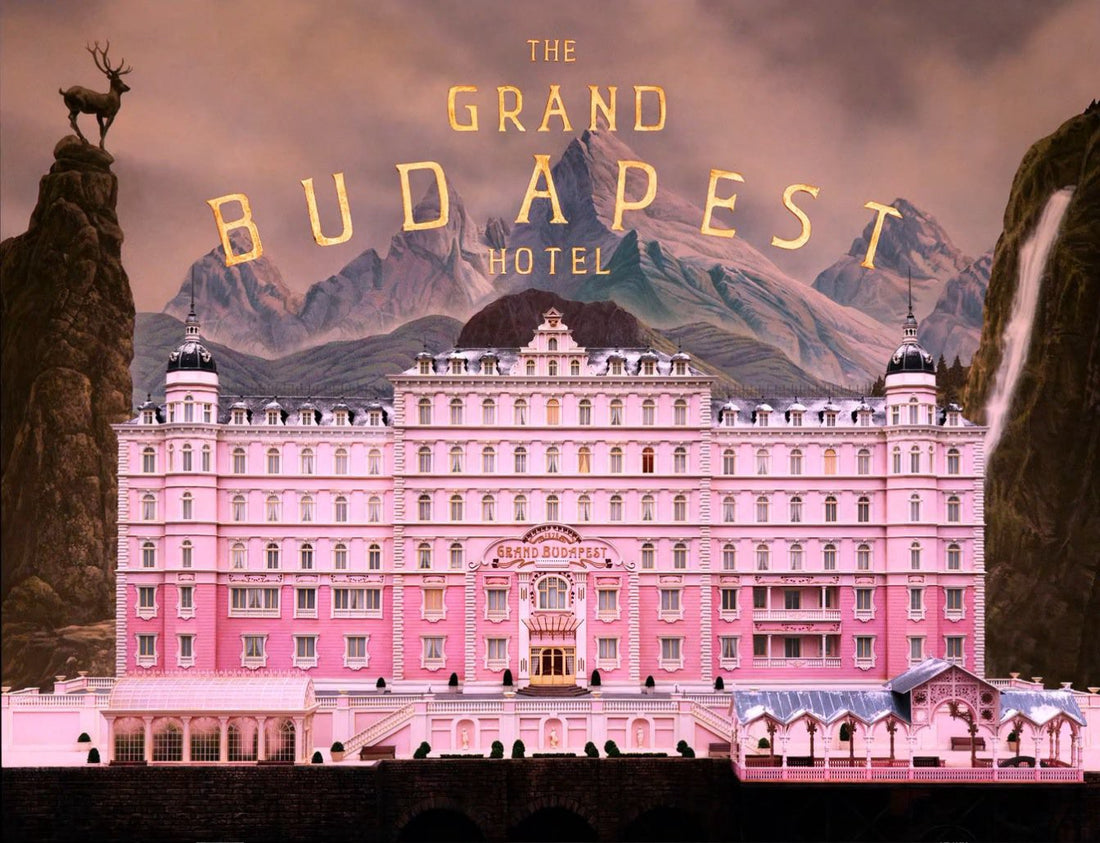
Wes Anderson is a meticulous director with a specific view of capturing the art of aesthetics
I want to talk about visual aesthetic through an artistic perspective, and steer away from the themes and story meaning, simply because I really did not like a lot of things. I think it's important to understand we can appreciate the skill and all the ways this movie was shot but also dislike the narrative aspect.
What I would like to focus on is the formal side of how this film is brilliant; where cinematography, mise-en-scene, and continuity editing are executed seamlessly through the auteurism of Wes Anderson.
While we talk about auteurism I think it’s important to talk about semiotics, which is the studies of signs and symbols. Signs meaning the smallest meaningful unit of communication.
The signifier is what is materially presented to the viewer
The signified is the meaning the viewer supplies to it.
Together they form the sign.
To further break It down there are Connotative and denotative signs.
-Connotative are the attributes of something that is generally know in society
- Developed by the community and do not represent the inherent qualities of the thing.
And denotative are the precise attributes from what is seen.
The power of connotation is that it enables the addresser to more easily consider
abstract concepts and to introduce subtlety into the
discourse
PART 1
Cinematography
Classic cinematography shares many qualities with photography, videography, and digital cinematography. The basic principal carry over from one medium or technology to the next.
It involves making a choice: between types of shots, types of lenses, and camera movement.
Wes Anderson has worked with Robert Yeoman for over 20 years, they are known for their very isolated, well framed, almost analogue shots which we can refer to as a directors auteur.
Continuity editing is the standard form of editing. It creates a smooth sense of flow so that the story takes priority over the mechanics of storytelling. Most of the time the edits go unnoticed to the viewer; attention goes to actions, characters, situations and events.
The continuity of his work is so detailed for example the opening scene, we are presented with an establishing long shot, was a scenic background, a peak-a-boo middle ground and a foreground featuring only two people that rendered them as small figures relative to their surroundings.
The way we see continuity editing work is in the scene that comes right after this establishing shot, the primary camera angle moves from a forward facing point of view to a side angle POV, that then dolly’s parallel to the girl walking through the grave yard. It gives the film an effortless flow as the viewer sees through the eyes of the camera.
He's also know for mixing between continuity and discontinuity,
which is referred to the alternative ways of creating seamless transitions, for example Robert mentioned the use of The whip pan
- It is an extraordinary shot that gives the scene a fast pace energy
Basically Yeoman had to swing the tripod - mounted camera from one face to another, making sure to land on the new subject with absolute stillness. This was another amazing technique that revolutionized how conversations could be captured in one shot.
This happened in the conversation during the shoot out scene at the hotel between Dmitri and the other guests. The camera is in the centre and spins to each character as they spoke in one take.
In mainstream film 'conventions'
- The patterns of organization that operate most frequently in films and that viewers expect to encounter.
we know, but may not completely understand this to be a Shot reverse shot over the shoulder.
In this convention its important to conform to the 180 - degree rule, this rule is a convention that can be violated (the whip pan), imagine it like this if an imaginary line is drawn between the two characters and treated as if it were the diameters of a circle surrounding the two characters, all of the shots should be takes from one side of that line.
Something really amazing about his work is the jump from the camera being an ominous third party point of view; The personification of in animate objects as a point of view. We begin to to see through the lens of objects such as statues, paintings, walls, etc, to the POV of the character.
The equal mise-en-scene
Mise-en-scène is the stage design and arrangement of actors in scenes for a theatre or film production, both in visual arts through storyboarding, visual theme, and cinematography, and in narrative storytelling through direction.
His scenes are so precise and well balanced, you could literally draw a line right down a shot and find its basically equally centred. You wanna know why? It's because they were measured and that becomes one of his film attributes.
Something to note from the film
He’s establishing shots are very doll house vibes, we see this in his other work for example Moonrise Kingdom
Where it seemed like the audiences general perspective of the location was in that form, the picture esc quality came from Wes Anderson’s research into making the film look like the early version of Kodachrome, hand tinted photography. This is why some scenes looked so influenced photography.
Hand colouring is the method of manually adding colour to a monochrome photo, either to heighten the realism or for artistic purposes
watch here
https://www.uwatchfree.si/2019/06/the-grand-budapest-hotel-2014-full-movie/



